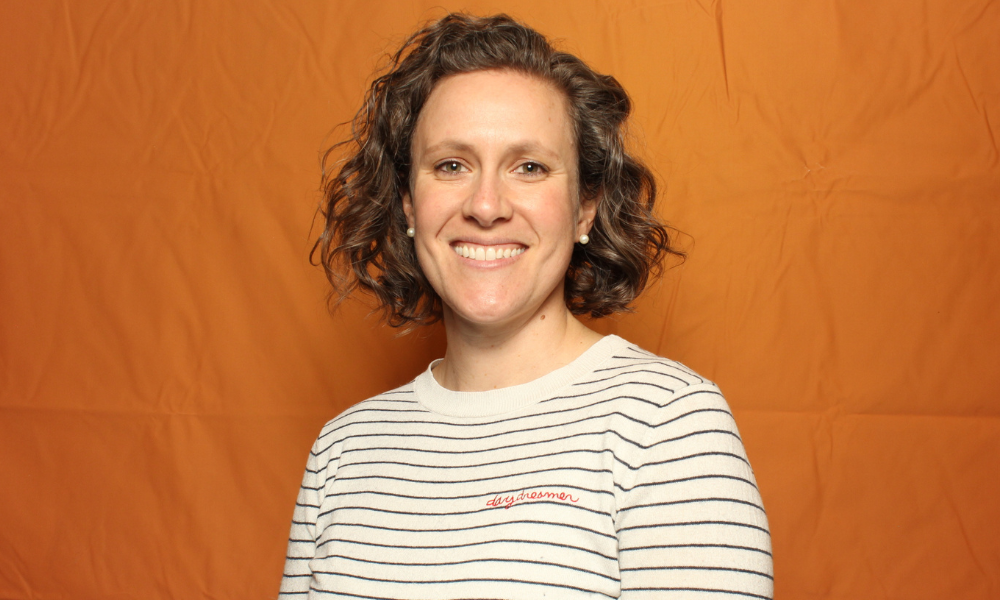
HubSpot director shares office changes for both collaboration and privacy

Courtney Lelinho has become the de facto interior decorator of HubSpot.
With 88% of its workforce opting to work remotely or in a hybrid model, the director of business technology has been tasked with re-designing the Cambridge, MA-based tech firm’s office spaces. Her belief is that companies should double down on workplace tech and experiment to determine what best serves employees in a post-COVID world.
“The thought of going back to the office as it was pre-pandemic is very much a nonstarter,” Lelinho told HRD. “The office has always been a core part of our culture and change needs to happen in order for that to remain true. We really need to rethink our spaces and how we do that in a way that’s experimental, data-informed and tech-forward.”
Read more: Indeed VP on return-to-office push: ‘You can’t put the genie back in the bottle’
Her team oversees internal collaboration technology, such as conferencing, project management tools, meeting spaces and workplace technology. Within three months, the team launched 25 hybrid meeting rooms across HubSpot’s global offices. The designs were inspired by insights from employee surveys, experimenting with various technology and performing due diligence to understand what other companies are doing.
“Social work is bringing people to the office,” Lelinho says. “Employees want the ability to socialize, have full team offsites, face-to-face meetings or just go out with colleagues after work. However, once in the office, employees also want the option of having privacy.”
Thus, the company has created divisions between collaborative and private spaces. The latter includes improved acoustics, phone booths and 1:1 meeting pods, along with quiet spaces for focus work and meditation. The former includes new conference room layouts, camera and video conferencing technology and improved acoustics, along with digital whiteboarding hardware and software to create a collaborative experience.
“Pre-pandemic, a meeting space was optimized for getting as many people as possible in there while people dialing in were an afterthought,” Lelinho says. “It’s easy to have proximity bias, so we’ve tried to understand what tech can create equity in that meeting space. It should look and feel like you’re all sitting at the same table with equal access to hear and see people clearly.”
In addition to physical changes in the company, HubSpot is heavily investing in educating employees to adopt behaviors that are empathetic and inclusive of colleagues not in the office. The company has even created a “Hybrid Work Series” to help managers recognize things like proximity bias.
“At the core of everything is empathy,” Lelinho says. “The perception is that the office space will just benefit those who go in. That’s absolutely not the case, as we’re designing this with our remote workforce in mind, as well.”
Read more: HubSpot chief people officer: How HR should manage leadership transitions
Of course, all of this tech can come with a hefty price tag. Even though luring employees back to the office has been challenging, HR leaders are already dealing with other pricey initiatives, such as expanding benefits packages and raising salaries to remain competitive, all while contending with historic inflation. There just might not be any room left in the budget for re-designing the office.
However, Lelinho says that shouldn’t discourage you from trying.
“Even if you have zero dollars, there’s a lot that can be done in terms of testing out new concepts and enabling behaviors,” Lelinho says. “We’ve done something as simple as flipping tables in conference rooms. All the sudden, everyone is facing the camera. So, there are definitely low-budget ways to experiment with your existing set-up. Tech doesn’t solve everything, though. Changing behaviors is the hardest thing to do, but it gives you the most bang for your buck.”
Flexibility in where, when and how one works has emerged as the top priority during the Great Resignation. Of the workers who declined their last job offer, 45% said flexibility or work-life balance was the main factor that led to their rejecting the offer, according to recent data from Gusto, a San Francisco-based HR tech firm. Additionally, 48% of workers said that the ability to work from home some or all of the time would be a major or the most important factor in determining whether to accept a job offer in the future.
Despite consistent data throughout 2022, major players like Google, Apple and Tesla have requested their employees return to the office for at least a few days a week. (Except for Tesla, which hasn’t been as generous.) That’s left HR leaders with the responsibility to make the office as attractive as possible, considering that workers largely proved over the past two years that they could perform their roles sufficiently from the comfort of their home.
“As you think about office space experimentation, double down on short-term plays,” Lelinho says. “For HubSpot, it was how can we learn quickly and iterate quickly without too much investment upfront.”